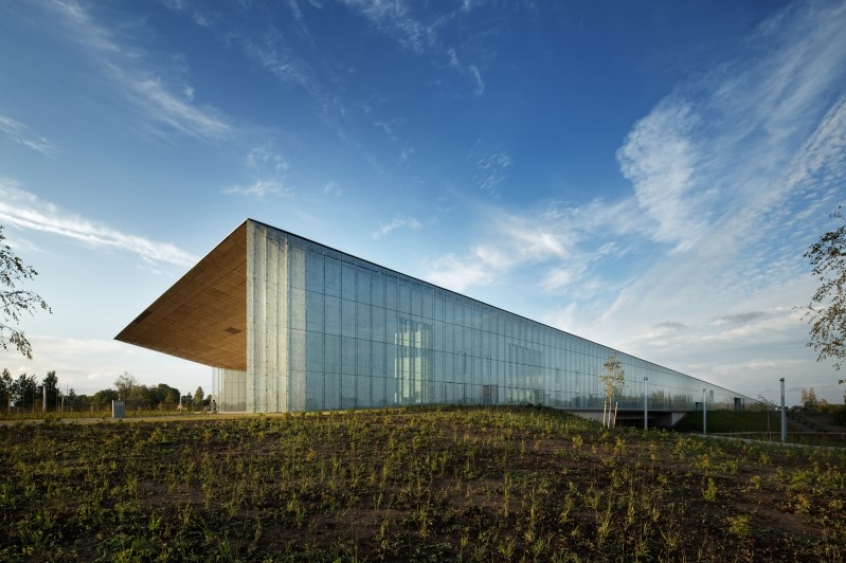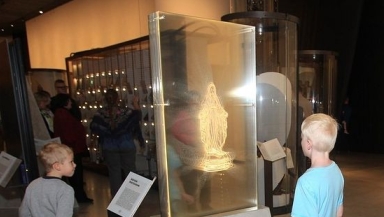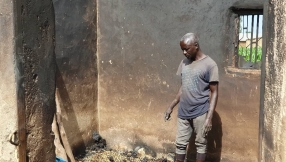
The new National Museum in Estonia has backed down over a controversial display that allowed visitors to kick an exhibit which then showed an image of the Virgin Mary shattering, with the word 'Reformation' appearing.
The 'holographic' exhibit, which was criticised by church figures and politicians when it was unveiled earlier this month, will still appear to shatter at scheduled intervals but visitors will no longer be able to kick a spot on it.
Varro Vooglaid, the head of the Estonia Foundation for Family and Tradition, said that the museum, situated in Tartu, "has taken a big step in the right direction which we welcome."
Vooglaid told LifeSiteNews: "Of course we want the exhibit removed entirely...But we welcome this change. It is an outrage, really very brutal and banal to allow people to kick an image of Our Lady."

Vooglaid claimed that a public relations officer for the museum, Kaarel Tarand, publicly acknowledged that the exhibit was intended as mockery. "He basically admitted it was a way of insulting religion," said Vooglaid. "He said it shows that Estonia is a secular society, where it is allowed to mock religion. But when the national museum does it, it is insulting religion in the name of the Estonian state."
Priit Sibul, parliamentary faction chairman of the ruling Union of Pro Patria and Res Publica, said that "kicking an image of the Mother of God is something they did in the Soviet cultural space but would not demonstrate in public."
The Archbishop of the Estonian Evangelical Lutheran Church, Urmas Viilma said the exhibit is offensive not only to Lutherans, but also to Catholics and Orthodox Christians alike. He pointed out that the entire nation of Estonia was dedicated to the Virgin Mary 300 years before the Reformation, so "for Estonians, Virgin Mary has a special meaning; no wonder the country is popularly called the Land of Mary."
Archbishop Viilma had previously written on Facebook: "I very seriously doubt that this exhibit is suitable for the permanent collection of the National Museum of Estonia, even if it is interesting from a technical point of view or from the perspective of modern approach to the depiction of historical events.
"The virgin Mary for a huge number of believers is not some historical figure or event, gone into oblivion, but a reality today."
Mart Helme, the leader of the opposition Conservative Party, warned that the exhibit could offend the large Russian minority in the country.
"Most Russians living in Estonia are actively religious people and their integration is not helped by the religious insult approved on a state level," said Helme, who was Estonia's ambassador to Russia in the 1990s. "An attack on symbols may lead to an escalation of social tensions and a cooling of the interstate relations."
Formerly part of the USSR, Estonia is on the front line between Europe and Russia and is the focus of rising fears about Russian expansionism following the assault on Ukraine. Last year it announced it would build a border fence to improve security.













